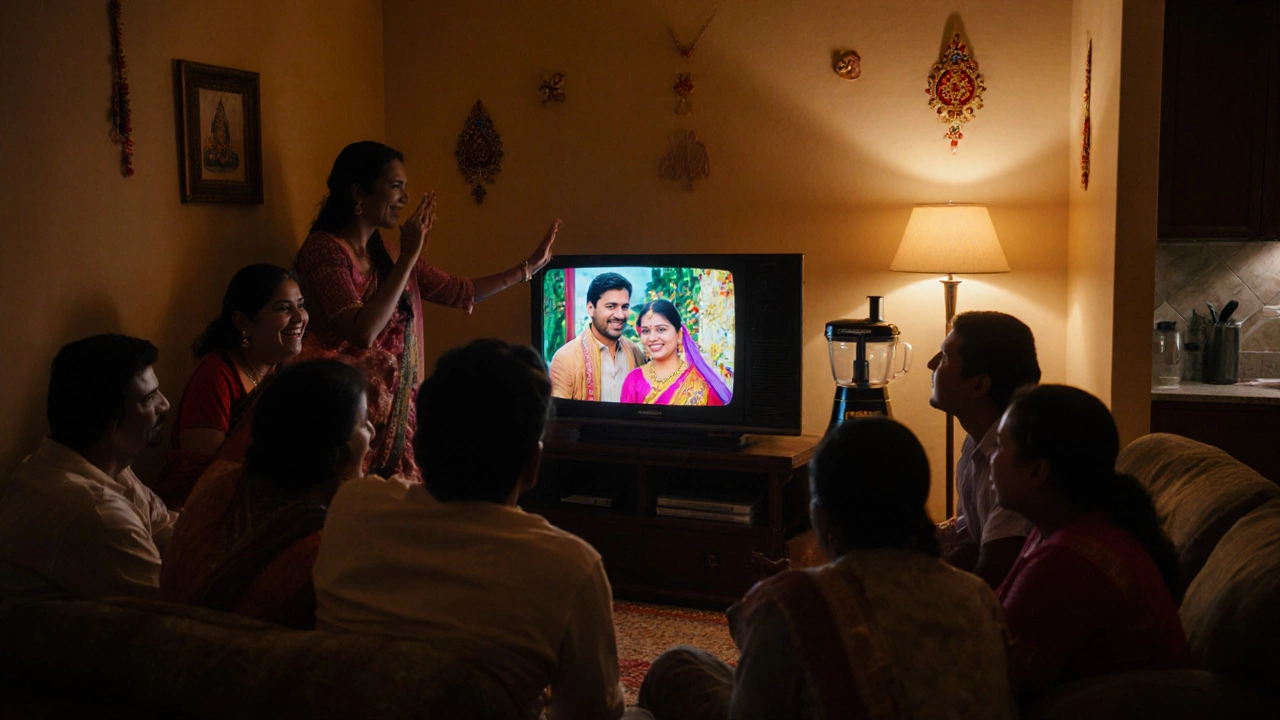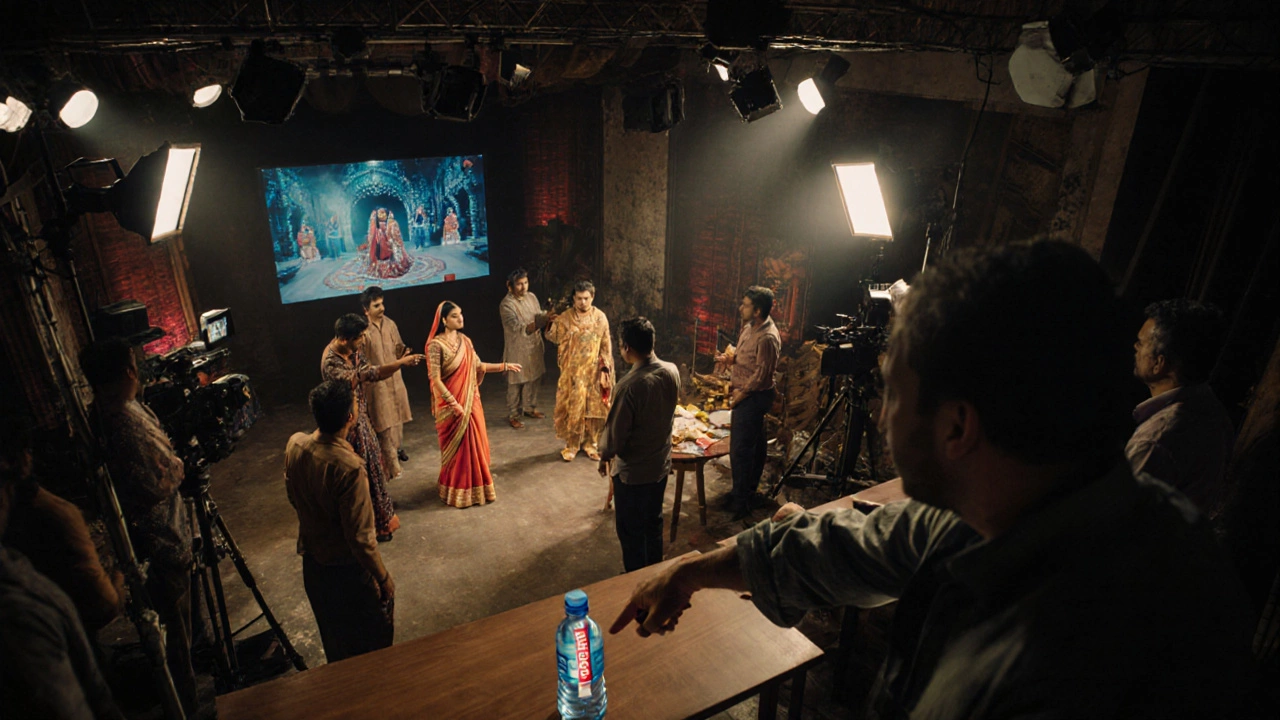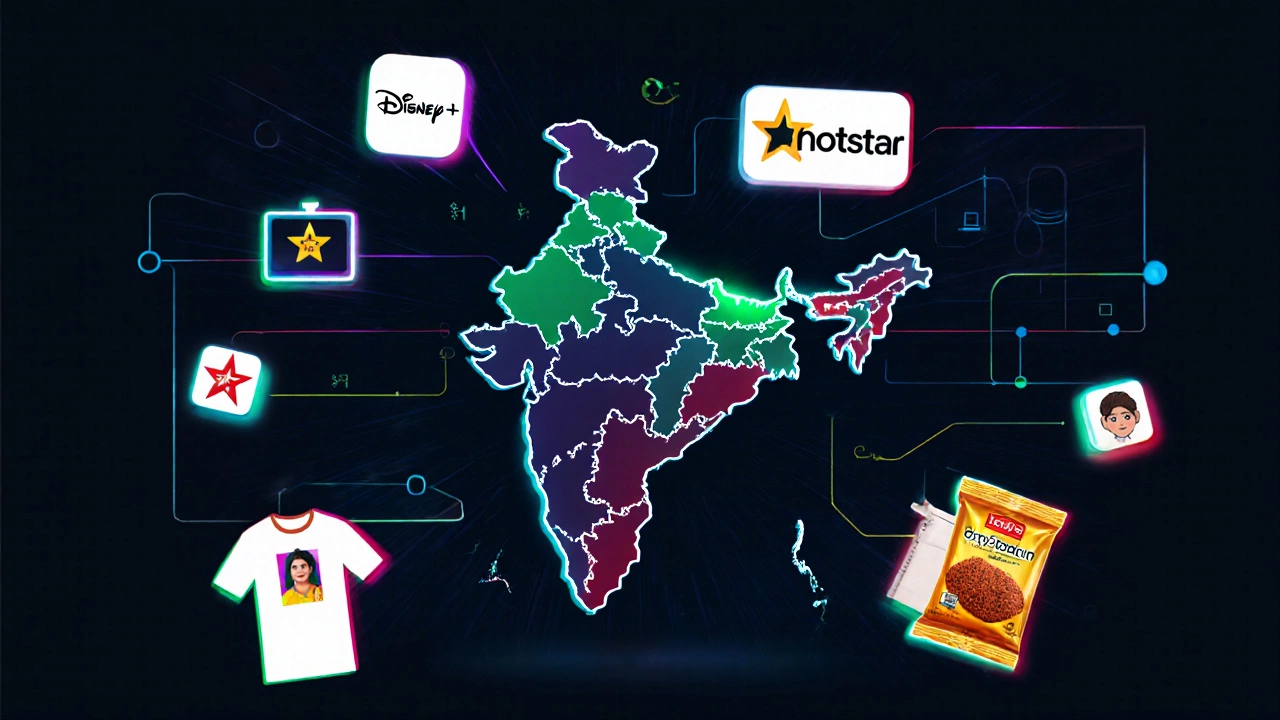How Do TV Serials Earn Money in India?
 Oct, 30 2025
Oct, 30 2025
TV Serial Revenue Calculator
Input Parameters
Revenue Breakdown
Enter values above to see estimated revenue
Ever wonder how a daily soap opera on Star Plus or Sony TV makes millions every year-even though you never pay to watch it? The truth is, Indian TV serials aren’t selling tickets. They’re selling attention. And in a country with over 900 million TV viewers, that attention is worth billions.
Advertising Is the Main Source of Income
Over 80% of a TV serial’s revenue comes from commercials. A single 30-second ad slot during prime time on a top-rated show like Yeh Rishta Kya Kehlata Hai or Anupamaa can cost between ₹8 lakh and ₹15 lakh (roughly $9,500-$18,000). During festivals like Diwali or Eid, when viewership spikes, prices can jump even higher.
Why? Because these shows dominate household screens. A single episode of a popular serial can pull in 15-25 million viewers. That’s more than the population of most European countries. Advertisers don’t just want eyeballs-they want families gathered around the TV, watching together. That’s the sweet spot for FMCG brands like Hindustan Unilever, P&G, and Nestlé.
It’s not just about reach. It’s about repetition. Serials air daily, five or six days a week. That means the same ad runs 30-36 times a month. For brands selling detergent or toothpaste, that kind of frequency builds instant recognition. No other medium offers that kind of guaranteed, repeated exposure.
Product Placement Is Big Business
Forget flashy billboards. In Indian TV serials, product placement is baked into the story. The heroine uses a specific brand of hair oil. The hero sips from a particular bottle of water. The kitchen has a branded mixer-grinder in the background. These aren’t random props-they’re paid placements.
Companies pay anywhere from ₹2 lakh to ₹10 lakh per placement, depending on screen time, dialogue mention, and how central the product is to the scene. A full episode where a character uses a phone for 15 minutes might cost a brand ₹50 lakh. And unlike ads, viewers don’t skip or mute these. They’re part of the narrative.
Some shows even create storylines around products. A character might need a new fridge because the old one broke-then the brand’s new model gets a 2-minute spotlight with all its features explained naturally. It’s marketing disguised as drama.
Streaming Rights Are Growing Fast
Five years ago, streaming platforms barely mattered. Today, they’re a major revenue stream. Platforms like Disney+ Hotstar, SonyLIV, and MX Player pay networks big money for exclusive digital rights. A hit serial might fetch ₹20-50 crore ($2.5M-$6M) just for streaming rights over 2-3 years.
Why? Because streaming services need content to keep subscribers. A popular serial brings in viewers who might not even watch live TV. And once they’re on the app, they watch other shows too. For platforms, it’s a loss leader-they pay more upfront to lock in audiences.
Some networks now release episodes on streaming platforms before they air on TV. Others delay the broadcast by a day to drive app usage. It’s a new game, but the goal is the same: keep people watching.

Merchandising and Brand Extensions
It’s not just about ads and streams. Popular characters become brands themselves. Think of the iconic Thakur from Yeh Rishta Kya Kehlata Hai-his turban, his cane, his voice. Merchandise like T-shirts, mugs, and even perfumes have been launched under his name.
Some shows sell digital collectibles, like NFTs of key scenes. Others partner with fashion brands to launch character-inspired clothing lines. A few even launch their own food products-like the “Anupamaa Masala” spice mix that sold out in 48 hours after being featured on the show.
These aren’t just side gigs. For top serials, merchandising can add ₹5-15 crore annually to the bottom line. It turns fictional characters into real-world brands.
Re-runs and Syndication Keep the Money Flowing
Even after a serial ends, it doesn’t die. Networks re-air old episodes on sister channels or regional language feeds. A show that ran for 500 episodes in Hindi might be dubbed into Tamil, Telugu, Marathi, and Bengali and sold to local channels.
Syndication deals can bring in ₹1-3 crore per year for each dubbed version. Some serials from the 2000s are still earning money today because they’re shown in rural areas where cable TV is king and new content is scarce.
These re-runs cost almost nothing to produce-just a few lakhs for dubbing and editing. But they keep the revenue rolling in for years. It’s the ultimate return on investment.
Production Costs Are High, But So Are Returns
Building a TV studio in India isn’t cheap. A fully equipped studio with lighting, soundproofing, green screens, and makeup rooms can cost ₹5-10 crore. Add in salaries for 50+ crew members, daily shooting schedules, costume design, and location shoots-and monthly costs can hit ₹1.5-3 crore.
But here’s the catch: a single serial can run for 5-10 years. If it hits 1,000 episodes, and earns an average of ₹1.2 crore per episode in ad revenue, that’s ₹1,200 crore in total. Even after paying for production, talent, and marketing, the net profit can be ₹400-600 crore.
That’s why production houses like Balaji Telefilms, Sphere Origins, and Rajshree Productions keep investing. They don’t need a hit every season. One blockbuster serial can fund five others.

Why This Model Works in India
Unlike the U.S. or Europe, where streaming and on-demand content dominate, India still relies heavily on linear TV. Families watch together. Older generations don’t use apps. Rural areas have limited internet. TV remains the most accessible screen.
Also, serials tap into cultural values-family, duty, tradition, sacrifice. That emotional connection keeps viewers loyal. A viewer might switch brands, but they won’t switch shows. They’ve followed the characters for years.
And with India’s population still growing-and TV penetration still rising in smaller towns-the audience base keeps expanding. That’s why advertisers keep pouring money in.
What’s Changing?
Not everything is stable. Younger viewers are drifting to YouTube and Instagram. Advertisers are testing shorter formats. Some serials now release 5-minute clips on social media to drive traffic back to TV.
But the core model hasn’t broken. It’s adapting. Studios are now building hybrid setups-smaller studios for social content, bigger ones for daily episodes. They’re hiring digital marketers alongside directors. And they’re using data from streaming platforms to tweak storylines in real time.
The future isn’t about replacing TV. It’s about expanding it. Serials are no longer just TV shows. They’re multi-platform content ecosystems.
How Much Do Actors Earn?
Top actors in hit serials earn ₹3-8 lakh per episode. That’s ₹90-240 lakh a month if they shoot 30 episodes. Some even negotiate profit-sharing deals, where they get a cut of ad revenue.
Supporting actors make ₹15,000-₹50,000 per episode. Crew members-camera operators, lighting techs, costume designers-earn ₹15,000-₹40,000 monthly. The industry supports over 100,000 jobs directly.
It’s not just entertainment. It’s employment. And that’s part of why it survives.